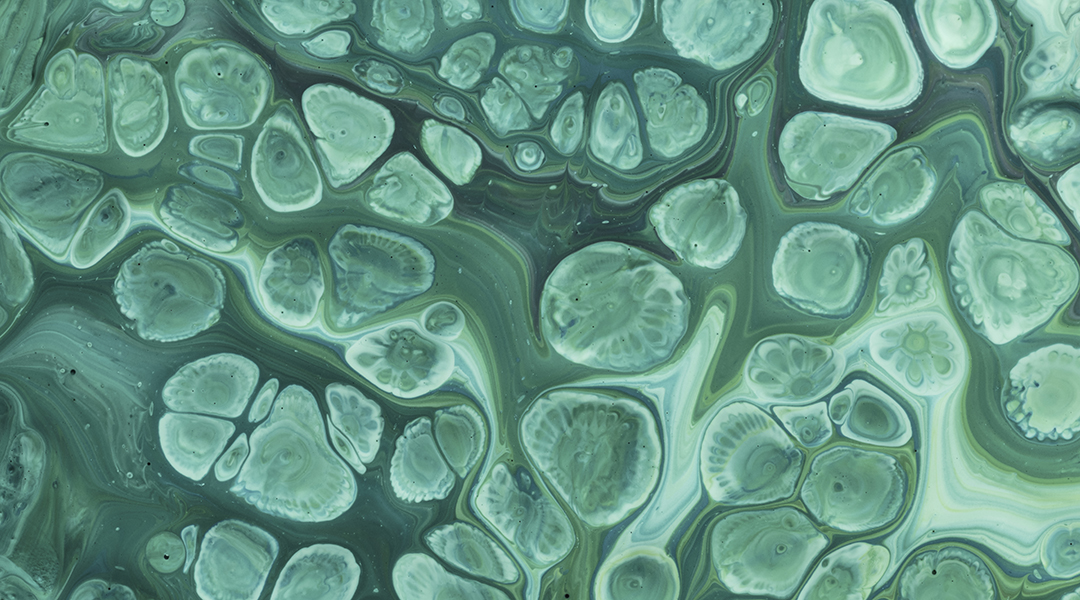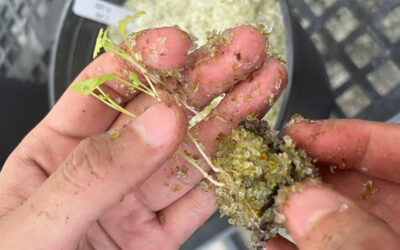As our collective awareness of the impact of human activities on the planet grows, the pursuit of sustainable solutions has become more important to ensure the well-being of future generations.
A crucial part of this strategy is the development of eco-friendly food and energy sources. Traditional means of both food and energy generation have placed enormous strain on Earth’s resources, depleting land, water, and energy reservoirs. However, scientists have discovered an unlikely champion in this quest: microalgae.
Microalgae live as single cells in water and soil and are in the spotlight due to their high nutritional value as well as providing a source of molecules that are of commercial interest, such as pigments and essential fatty acids used in food, dietary supplements, and cosmetics. Microalgae also serve as an alternative energy source as they can be metabolized by bacteria into bioethanol and biogas or chemically converted to biodiesel.
While promising for sustainability efforts, the extensive use of microalgae in these areas is limited by the high production costs on industrial scales ($5 to $30 USD/kg). To tackle this, in a recent study published in Advanced Energy Materials, researchers led by Xiaobo Yin from The University of Hong Kong have made significant strides in increasing the efficiency of microalgae production.
Their approach involves the development of a clever optical film designed to maximize microalgae photosynthesis by converting non-photosynthetic sunlight into usable active light. By implementing this technology, Yin and his team achieved remarkable improvements in microalgae yield, paving the way to a more sustainable means of green energy production.
Unleashing the power of sunlight
Photosynthesis allows plants, algae, and some bacteria to convert radiant energy from the Sun into chemical energy. With the power of sunlight, these organisms convert water and carbon dioxide (CO2) into oxygen and sugar. However, not all sunlight is effective at driving photosynthesis.
The pigments in these organisms that collect light, namely chlorophylls and carotenoids, can only extract energy from blue and red light, leaving green light unused. Although this energy waste may seem insignificant in nature, it could have implications for production costs of microalgae at industrial scales.
To improve photosynthesis efficiency, researchers have been trying to increase the size of the light-collecting pigments or have tried to induce the algae to produce pigments that collect green light through genetic engineering. However, most species microalgae are resistant to genetic manipulation or show genetic instability, meaning they are prone to lose the foreign gene over time, limiting its application.
Instead of manipulating the algae, Yin and collaborators built on a strategy that improves the quality of the sunlight reaching the algae using light-managing films placed on bioreactors. These films convert “wasted” green light into red light that the microalgae uses in photosynthesis.
In the past, the flat surfaces of these films actually contributed to light trapping due to total internal reflection of the light. To fix this, the team modified the flat surface of the light-managing film, developing a textured surface covered with micrometer-sized domes. The curved 3D shapes improve the probability that the light will be redirected into the bioreactor, providing the microalgae with more photosynthetically active red photons for photosynthesis.
Hands on the bioreactor
To build the film, the team chose a transparent plastic material into which they embedded molecules called fluorophores. These molecules absorb energy from light of a specific color and emit it as light of a different color, in this case, converting the higher energy green light into lower energy red light. “The spectral-shifting films here use low-cost […] polymers as matrices and, more importantly, easy to manufacture at-scale,” wrote the team in their paper.
After analyzing the optical properties of the light transmitted through the film, the team confirmed that in addition to allowing blue and red colors to pass through, the film transmitted more red light resulting from the conversion of the absorbed green light. This increased the ratio of red to green transmitted light by five times compared with a fluorophore-free planar film. Furthermore, they demonstrated that in their system microdomes enhanced light extraction efficiency from only 13% to an impressive 65% due to the light recycling process facilitated by the curved shape.
To test if their film could modify photosynthesis in Chlamydomonas reinhardtii (C. reinhardtii), a well-known microalga of commercial interest, they placed their film over a bioreactor containing the microalgae.
The scientists found that at different light intensities, the algae grown under the modified film produced more oxygen, indicative of more photosynthesis, than algae grown facing a flat film without fluorophores. However, this improvement in photosynthesis was lost if algae concentration was too high, likely because there were more algae than available light.
In addition to improved photosynthesis, the scientists also observed a higher growth rate, with 60% more algae produced under the new film. This is because C. reinhardtii can use the sugar fabricated during photosynthesis as energy as well as molecular building blocks for essential cellular components.
A step toward industrial scales
When producing algae for commercialization, size matters. To ensure high yields, organisms need optimal temperature and concentration of gases and nutrients achieved through heating, cooling, and agitation. As bioreactors used in industry are larger, they demand much more energy than the ones used in small laboratory setups, significantly impacting on operational costs.
To reduce production costs at larger scales, the team provided a proof-of-concept test, increasing the size of their bioreactors (5L compared to 0.2L used in the lab) and placed them outdoors under natural sunlight.
Normally, cultivation outdoors places several challenges as conditions such as light hours and temperature vary. Despite this, the team found that bioreactors covered with the light-managing film produced 20% more microalgae per day than control bioreactors covered with flat fluorophore-free film, confirming that the improvement in photosynthesis and algae yield is preserved at larger scales and under resource-efficient conditions.
“With the demands for sustainable and renewable algae-derived bioproducts, our work paves a way for promoting microalgae production in photobioreactors for scaling-up applications by efficient utilization of solar energy,” concluded the authors in their paper.
Reference: Lihua Shen et al., Microstructure Engineered Photon-Managing Films for Solar Energy to Biomass Conversion, Advanced Energy Materials (2023). DOI: doi.org/10.1002/aenm.202204393
Feature image credit: Image by Freepik
This article was modified on July 5, 2023 to correct the fact that the 3D domes don’t improve surface area, but help redirect red light into the bioreactors.

















